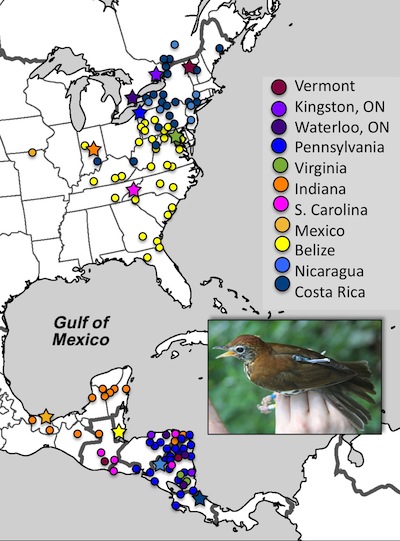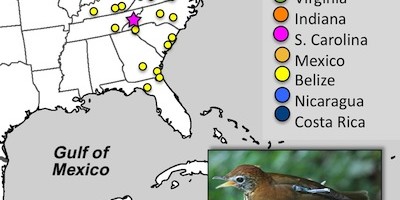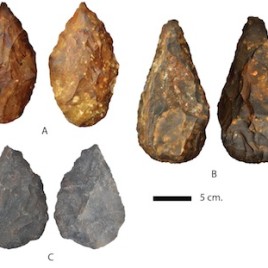
Researchers using backpacks to track wood thrushes during migration found that the species which travel furthest north in summer are the same ones that travel furthest south in winter. (Photo credit: Emily McKinnon)
Researchers have published the first detailed migratory map for different populations of wood thrushes. Over 100 birds were tracked using geolocators, a kind of ‘bird backpack’ that records sunrise and sunset times.
Among other things, researchers found that the birds which travelled furthest north in the summer are also the ones that travel furthest south in winter, leap-frogging over other populations. Mapping migration routes provides information that is critically needed by conservationists.
Original research paper published in the Conservation Biology on July 22, 2014.
Names and affiliations of selected authors

